Small aquarium fish: varieties and choices
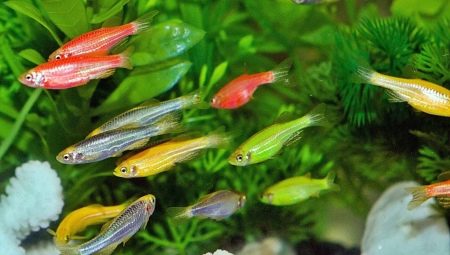
Among aquarists there are many who consider not only large, but also small fish to be a real decoration of their aquarium. There are a huge number of medium-sized fish species that are suitable for a home tank. However, for many, the process of choosing the right species is difficult, since all fish have a set of individual characteristics, behaviors and compatibility with other species in one container. An analysis of all these and other nuances is presented in detail in this article.

Advantages and disadvantages
Before enriching the fauna of your home aquarium with small fish, familiarize yourself with the positive and negative aspects of their content. The advantages of having such aquarium creatures include the following nuances.
- Since most small species live in flocks, the aquarist will have a unique opportunity to observe how the inhabitants of the same group interact with each other and show their character. This process is very interesting and fun.
- Individuals of small sizes take up little space, have a very aesthetic appearance and do not cause much trouble.
- They are also suitable for those for whom the interior or the size of the room does not allow to acquire a large tank exceeding 50 liters in volume. For small fish, such and even smaller dimensions of the container are quite suitable.
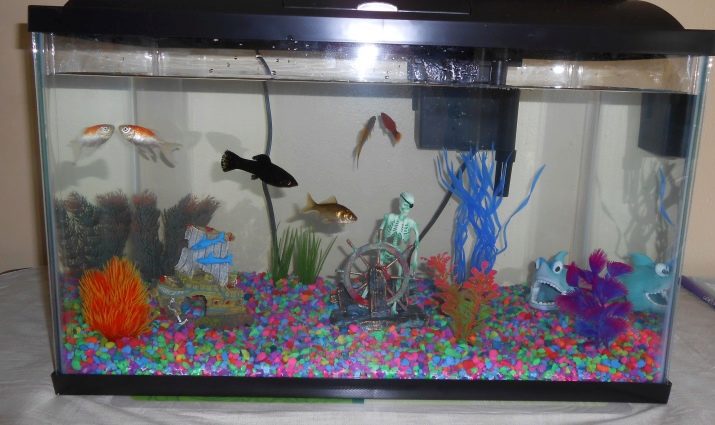
Of the negative aspects of such a hobby, the following points should be highlighted.
- It can be difficult to notice changes in the condition of the fish due to its small body.
- Adding small individuals to large ones is a risk for the former. Before this requires a complex process of studying the compatibility of different breeds.
Views
There are quite a few interesting mini fish for the aquarium. However, the most interesting varieties have the following names and characteristics.
- Guppy - creatures with an interesting shape and extraordinary beauty due to the luxurious tail inherent in males. Their slightly elongated body ends with a bright red or blue tail fin, covered with a bizarre pattern of dark spots. Guppies are distinguished by their amazing unpretentiousness, they are able to survive, as well as reproduce independently, even in conditions of low filtration.
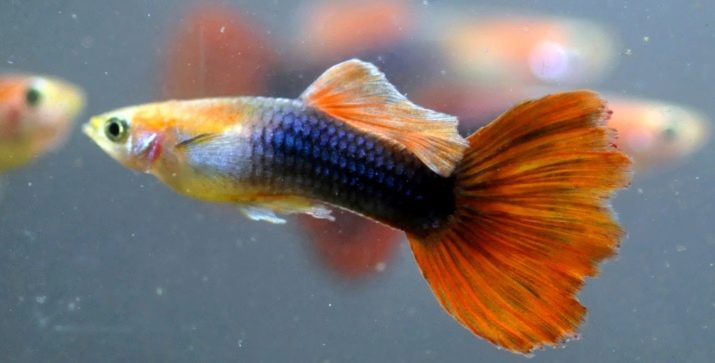
- The tank can be decorated with a school of fish called swordtails. They are so called because the lower part of the tail fin of the male is sharpened like a sword. The color of such fish can be different, since many of their subspecies have been bred. They like to live in reservoirs, densely planted with flora and a volume of at least 50 liters. These individuals live in small flocks. It is noteworthy that sometimes, in order to survive the species, females can temporarily change sex, becoming males.
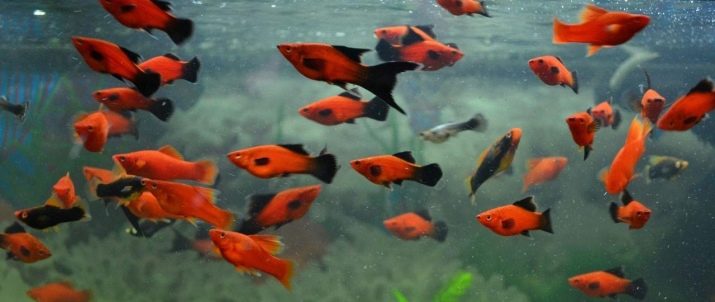
- Small breeds of dark fish called mollies are more difficult to maintain than guppies, but generally suitable for beginner aquarium hobbyists. According to their habits, these fish are quite playful and nimble, but their character is quite peaceful. They do not tolerate cold water, therefore, a favorable temperature for their maintenance is + 25-27 degrees Celsius. Individuals are viviparous, and their life expectancy is 4 years.
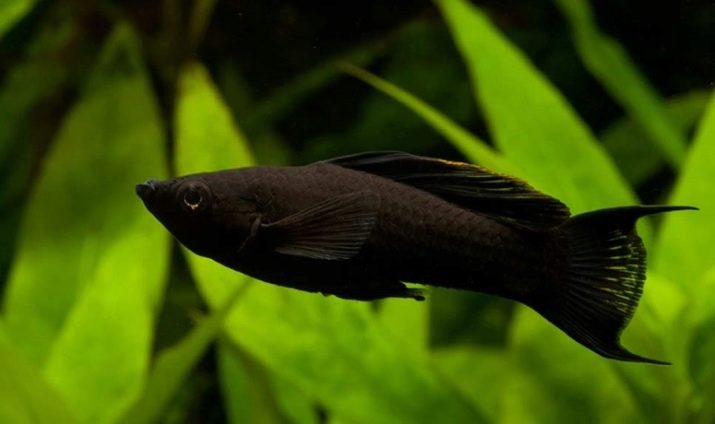
- Lemon tetra - yellow fish up to 4 cm in size, which lives in flocks, has a peaceful nature and high mobility. Such creatures have a flat body and expressive red-orange eyes. The dorsal and pelvic fins have a black pattern. The optimum temperature for them will be from 23 to 25 degrees.
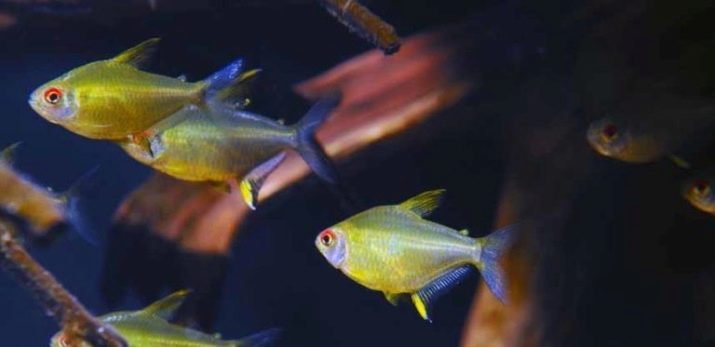
- Very convenient fish for novice aquarists from the haracin family will become thorns... She can have different colors depending on the subspecies - black-gray, pink, golden and even fluorescent. This small breed is easy to care for, it is kept in water with a temperature of 21 to 24 degrees, aeration and filtration systems. Water changes can be carried out once a week by 1⁄4 volume. By nature, the thorns are peaceful and calm.
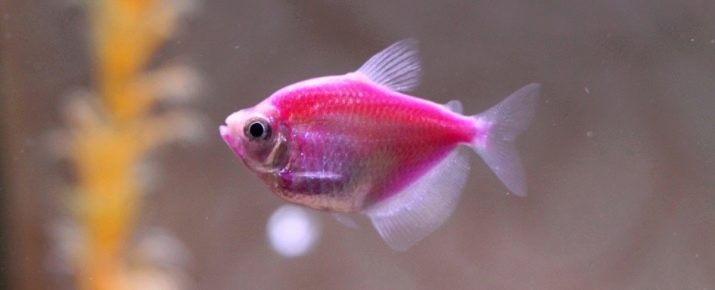
- Pink Danio Is also a very colorful and interesting breed of small fish. They have an elongated and flattened body, pink-colored scales, on which alternating white stripes can be seen, while the fins are transparent. The body of these individuals reaches 4.5 cm. At the same time, they do not like densely planted aquariums, since they need space for swimming.
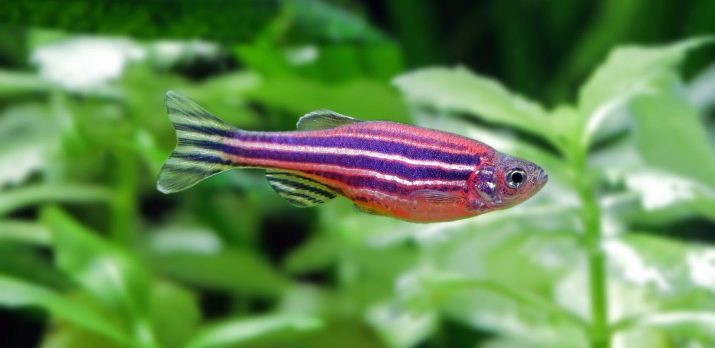
- Aquarium catfish Thoracatums are very peaceful mini-fish for a home tank. They love to live in an aquarium with lots of plants and decorations that can be used as hiding places. The shape of such a catfish is rather unusual - the elongated body has a small hump on top and a flat belly below. They live in the lower area of the aquarium, sometimes swimming in the middle layer, and are active mainly at night.

- Barbs are also considered small individuals., the body of which is 4 to 6 cm. They are quite fast, playful and at the same time temperamental. Some individuals are quite peaceful, while others may be cocky and even try to harm other fish.
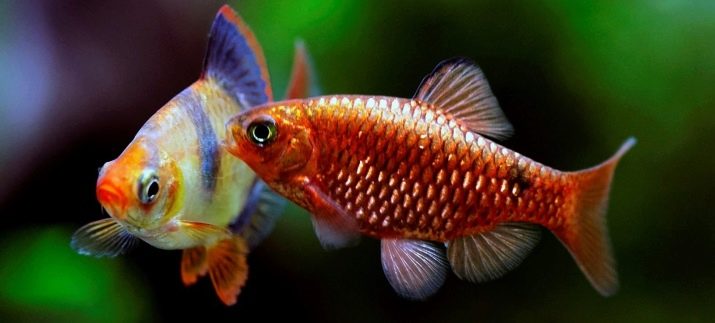
How to choose?
The process of choosing small inhabitants for an aquarium should include, in addition to the aesthetic component, such criteria as compatibility and the optimal number of fish of the same species.
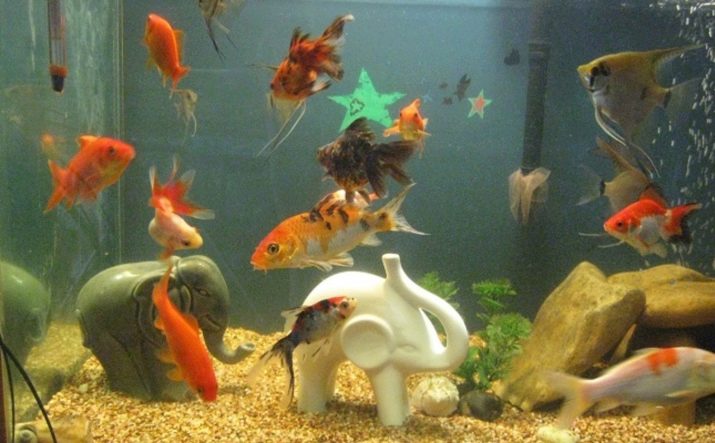
Compatibility
Neighborhood with other species is a key principle in the selection of small fish.
The first step is to exclude their compatibility with large carnivores, since it will not be difficult for the latter to swallow small inhabitants less than 5 cm long.
You also need to look at whether fish of the same size are showing aggression.Barbs, for example, can be aggressive towards other fish and should not be kept with species such as guppies. Guppies are generally best placed in a species-type aquarium.
Swordsmen get along well in the same tank with platypus fish, for example, minors, zebrafish, tetras. They also get along well with small species of bottom fish, such as corridors, platydorus. Do not allow the proximity of swordtails with cichlids and other larger carnivorous fish, as well as veiled individuals, whose fins can be accidentally damaged by swordtails.
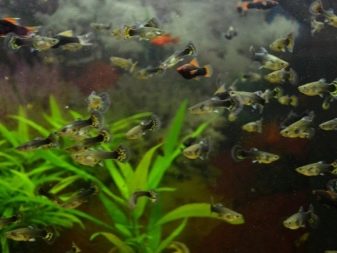
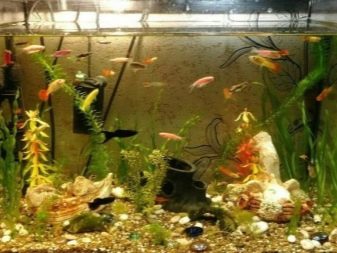
Mollies coexist well with other viviparous fish, such as swordtails or platies, as well as non-aggressive breeds. These breeds include lalius and gourami.
Tetras can get along well in the same aquarium with scalars, minors or other types of tetras. Thorns also get along well with tetras, but not very small ones. Other neighbors favorable for thorns include gourami, swordtails, corridorites, zebrafish.
However, these individuals should not be combined with veiled varieties or too small fish. You should also not risk combining such fish with larger ones, for example, cichlids.
Toracatum can be planted in one tank with all fish, except for too small ones and predators. These individuals are quite calm, so do not add fights and labeos to them, because of which the balance in the life of the torakatum can be disturbed.
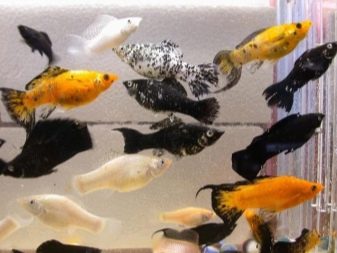
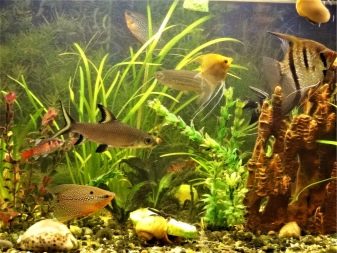
Quantity
When setting up small fish, it is worth remembering the fact that most of them live in small flocks. For each of the aforementioned species, there is a certain amount in which it is desirable to place them in the aquarium:
- the minimum amount of pink zebrafish in one tank is 6 pieces;
- lemon tetra should not be less than 5 individuals;
- thoracatum also need to be kept in groups of several, otherwise they may become stressed.
Similar characteristics are inherent in other small fish, because even in the wild, it is extremely difficult for such species to survive alone.
And in a home aquarium, the fish feels much more comfortable if they are near other representatives of their species.
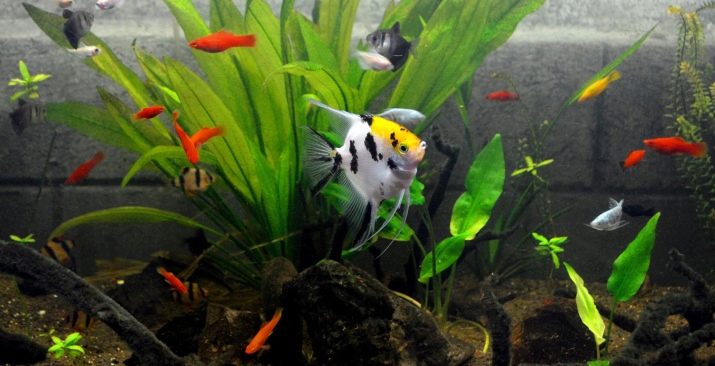
Beautiful examples
To better imagine how these or those small fish will look in the aquarium, look at the photos of representatives of various species.
- A small aquarium catfish feels very comfortable among plants and other decorative elements.
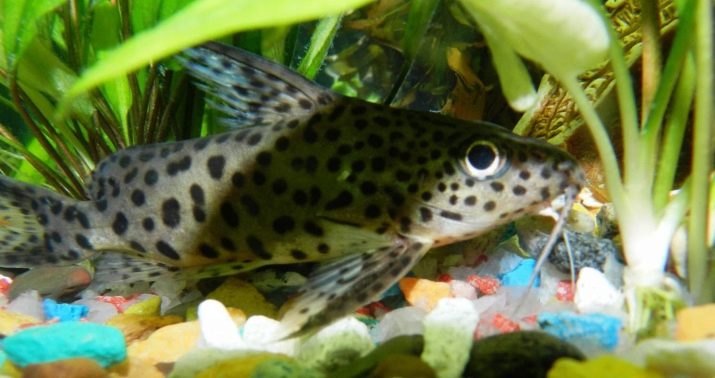
- Flocks of yellow tetras fit perfectly into the aquarium composition.
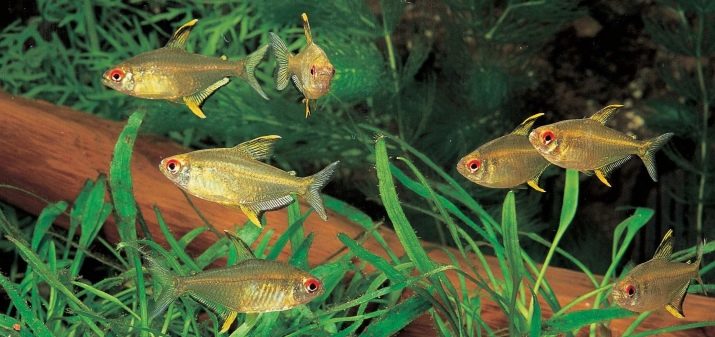
- The multicolored Danio mini-fish are eye-catching, contrasting with the green of the tank.
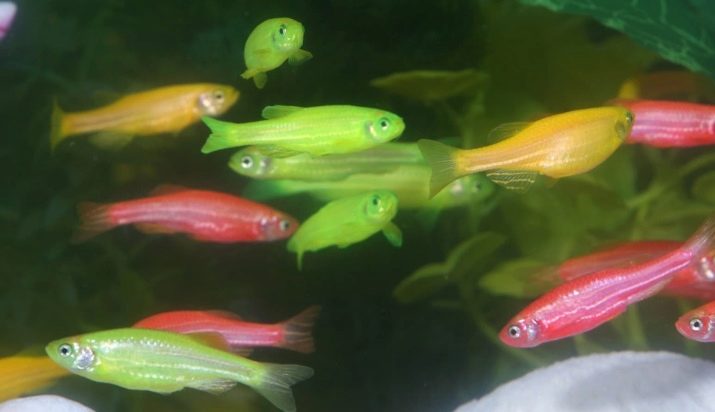
- The thorns organically appears among slightly smaller individuals.
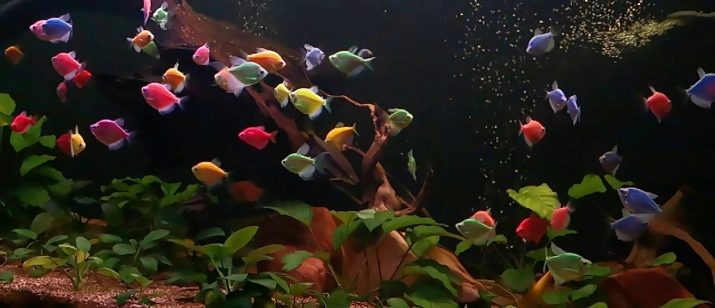
- Mallinesia, with its dark scales, looks very unusual in appropriate lighting. Groups of these fish resemble whimsical figurines.
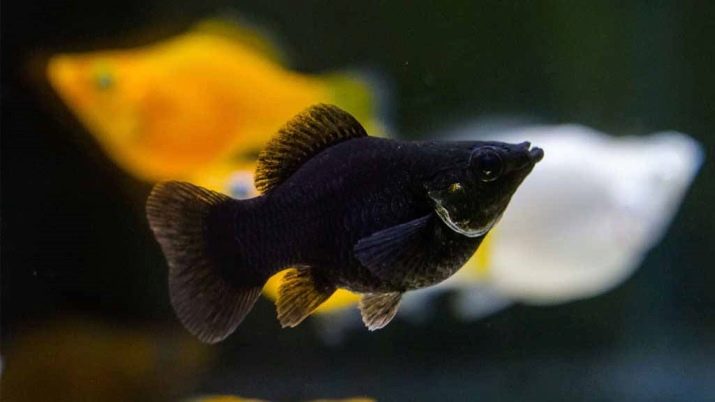
TOP-10 of the most popular and unpretentious aquarium fish, see the video below.








